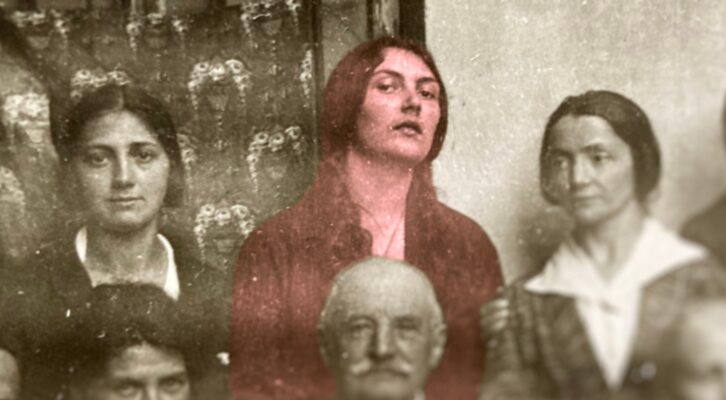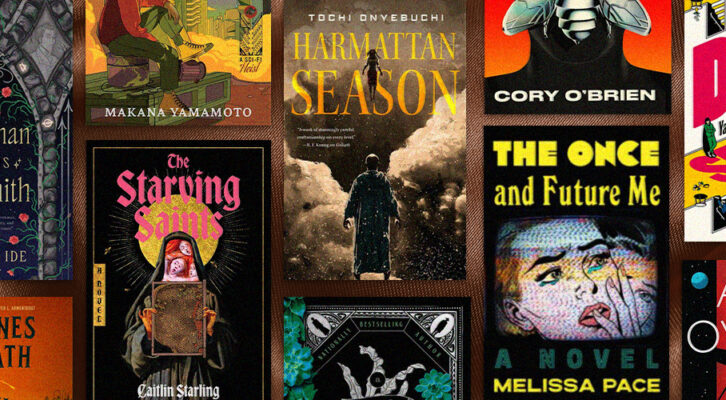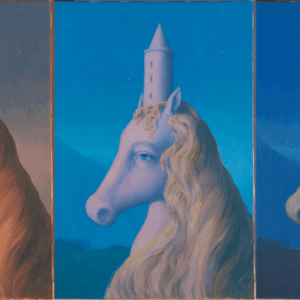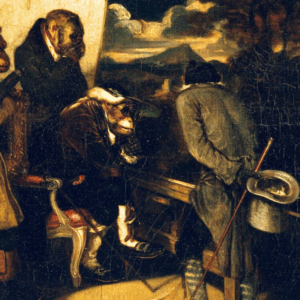
Lalla Romano Was Writing Autofiction Before It Existed
On the Late Italian Writer’s Masterpiece, “In Farthest Seas”
“It’s nice to have confirmation, in the midst of a literary world where everyone loses their minds or in some way grows stupid, that you are a serious person, forging ahead with your story, your line.”
In 1964, the Italian writer Lalla Romano received this compliment from one of her most steadfast admirers, and one of her editors at the publishing house Einaudi, Italo Calvino. Although Romano would continue to produce novels for several more decades, Calvino had already intuited that her books were, one by one, tracing a meticulously rendered personal story, or—depending on one’s interpretation of the Italian word storia—a personal “history.” Romano, in fact, rarely strayed from her own experiences, relationships and memories for the subjects of her writing. As a result, her books come together to form one of the fullest and most intimate expressions of a life in 20th-century art.
While this journey through memory in many ways culminated in 1987 with her masterpiece In Farthest Seas, Romano’s artistic “line” was always a striking and even unorthodox one. Before finally becoming a novelist in post-war Milan, Romano had a promising early career as a painter in Turin, where she also published her first collection of poetry in 1941. Her first book-length work of prose would follow ten years later, a collection of dreams titled Le metamorfosi (The Metamorphoses).
Although Romano rightly considered her depictions of dreams to be realistic, the book itself, with its uncanny, fragmented narratives, could not have been more distinct from the neorealist literature that was in vogue at the time. In fact, the book’s originality was immediately appreciated at Einaudi by Natalia Ginzburg and Cesare Pavese, with Ginzburg describing Romano’s dreams as “beautiful, fecund, vivifying.”
But, for Romano, exploring such meaningful relationships and turning them into art was a necessity.
As she had often done in painting through portraiture and landscapes, Romano turned increasingly in writing to the people and places around her—to the periods and spaces that had touched her the most, through love, strife and, at times, tragedy. Along with books on her childhood in the Alpine village of Demonte, near Cuneo, or on her years as a university student in Turin, much of Romano’s most important work explored disarmingly personal moments of her life as a wife, mother, and even grandmother, perspectives that were still relatively rare in Italian literature. And yet Romano approached these topics with both poetic rigor and emotional honesty, knowing that they were as worthy subjects for literary works as any.
In the case of her 1969 book Le parole tra noi leggere (Light Words Between Us), Romano’s sincerity about her uneasiness and even reluctance towards motherhood was shocking for the time, while the sheer number of details and documents she shares concerning her own son, Piero, and their difficult relationship could surprise readers to this day. Romano later said that Piero had read and been amused by the book, but when it won Italy’s most important literary award, the Strega Prize, its heightened success turned his prominence as a character into something far too burdensome, causing their already strained relationship to deteriorate further.
But, for Romano, exploring such meaningful relationships and turning them into art was a necessity, as she would say in an interview: “Writing is my way of being.” Like her other books comprising private connections and recollections, Romano preferred to call Le parole a novel rather than a memoir or autobiography, seeing the distinction between fact and fiction as an irrelevant one for literature. As she would state in reference to her later book In Farthest Seas: “I do not fear lived experience. Art is abstraction.” Or as she wrote elsewhere, emphasizing the very impossibility of composing a “factual” memoir: “for me memory coincides with invention.”
It is astonishing that such a powerful and acclaimed book on the topic of a spouse’s passing came so many years before the genre of the literary “grief memoir” became popularized.
Romano believed that she reached the pinnacle of her art with In Farthest Seas, which she continued to deem her “most important book” until her death in 2001. Here, the poetic and essential quality of her prose is at its purest, and at its most piercing, as Romano captures the essence of her life with her husband of five decades, Innocenzo Monti.
Divided into two parts, the book principally explores the “Four Years” of the beginning of their relationship, starting with the adventurous Alpine hikes during which they met and fell in love, and ending with their wedding and honeymoon in 1932; and, then, the “Four Months” of Innocenzo’s rapid decline and passing in 1984. Innocenzo was a banker, and the majority of the moments and images Romano seizes upon in the book—the gesturing of his hands when spotting him in the mountains, their awkward first night of sex in a lakeside hotel, a forgotten wedding anniversary or an unexpected and subtly tragic promotion at work—could certainly seem minor if not mundane when taken purely on face value; after all, their marriage is a relatively ordinary one.
And yet their relationship somehow represents a possible expression of “the wild life,” the one Romano first dreamt of during one of their early mountaineering excursions, a life imbued with passion, art and poetry. Indeed, their many years together reveal themselves as the vital heart of Romano’s own artistic output, as scattered throughout these pages appear pieces of her earlier books and, especially, poems, which come to assume the aura of dreamlike premonitions. In Innocenzo’s character there is even an innate poetry or, as Romano writes, “a substantive, irreducible purity,” one that over time reveals affinities with Romano’s own art: “What I want to say is this: his style, that is his language, was similar to mine in writing: concrete for sensations, reticent with facts, secretive but not duplicitous in feelings.”
Despite the purity that belongs to its subject, Romano’s is not an idealized depiction of a marriage, or of death. As a narrator she is capable not only of irony and humor but also of ruthless candor, such as when she contemplates “the agony of the animal” in relation to her own husband’s death—but, as she affirms recalling a Bacon painting, “There is no mercy without mercilessness.”
It is astonishing that such a powerful and acclaimed book on the topic of a spouse’s passing came so many years before the genre of the literary “grief memoir” became popularized, not least of all thanks to Didion’s The Year of Magical Thinking in the Anglosphere. At the same time, these pieces of Lalla and Innocenzo’s years together are too alive to constitute a book about grief or loss; rather, the reader is brought along the most intimate of journeys through love and death, and, as a result, that grief is both beautifully and painfully felt without ever being named directly.
As with Romano’s work in general, the difficulty of translating In Farthest Seas lies equally in its personal weight as in the poetic precision of the text, with each emotionally charged word having been chosen with intense care. It was in a 1996 piece on the book that Romano wrote one of the most telling characterizations of her writing: “For me, to write has always been to pluck from the dense and complex fabric of life some image, from the noise of the world some note, and surround them in silence.”
In In Farthest Seas, this silence is visual, too, the white of the page surrounding and almost enveloping the brief, revelatory chapters. And the words, while sparse, move together with pauses and spaces to form a musical, entrancing pace or rhythm, one that is distinct from everyday speech and which the reader must be willing to follow. Similarly, Romano describes entering Innocenzo’s rhythm in life, one she calls “pressing yet largo,” the same tempo she then uses to characterize the period of his mortal decline. “From its rhythm,” Romano declared in a piece titled “Why I Write,” “is born a novel’s enchantment. Often the novel encloses a secret (stimulating but vulgar, and fictitious); better a mystery (vague, veiled, but real).”
The real mysteries contained in this book are first those of physical, as well as intellectual, attraction and love, and ultimately the great human mystery of death—the passage through the “farthest seas” of the novel’s title, into another realm. While one could speak endlessly of Romano’s originality as a writer, and how before her time she was, in the case of this book it sometimes feels best to let the words and silences speak for themselves, and let their mystery endure.
In translating In Farthest Seas, there were many moments for which I never felt emotionally prepared, no matter how many times I had already read them. On a visceral level they were nearly paralyzing for their rawness, while they also invited prolonged contemplation; here is one example: “I consider ‘consolations’: that he was old only a month; and that he did not see me old. I had always thought (felt) that we would never be ruined by age. I perhaps will be, but it no longer matters.”
Or another: “In the hardest moments, of discouragement, I feel an urge to call out mentally: ‘Mamma!’ – and I realize that now my mother is him.”
When coming across these lines in the context of the novel, and feeling their mysterious and devastating impact, I had to acknowledge what a rare gift this was—to be able to work on a text in which a few words could feel as meaningful as many books, even good or great books, when taken in their entirety.
As Romano stated once again in “Why I Write”: “Deep down I am of the same breed as Joubert: ‘… put a whole book in a page, a whole page in a sentence, and that sentence in a word.’” This approach is at its most successful in In Farthest Seas, even as Romano maintains an impossible equilibrium throughout, effectively balancing each word and each epiphany within the musical whole. Consequently, adding glosses to the body of the translation, rather than unobtrusive endnotes, to explicate any of the passing characters that fill their life together would have altered this rhythm and damaged the book’s unique, almost diaristic sense of intimacy, since Romano defined its original motivating force as “questions and answers to myself.”
Ever since her first collection of dreams, which Romano paradoxically considered realistic—or her second novel, A Silence Shared, which explores the very real hardships of war but unfolds as “a winter night’s dream”—Romano consistently saw her work as a mixture of reality and invention, of memory and dream. In fact, when considering “what memory means to me,” she concluded: “it means dream.” Towards the end of In Farthest Seas, when reflecting on the period following Innocenzo’s death, she writes: “Suddenly, in those days, to myself I called my life with Innocenzo ‘a beautiful dream’. Perhaps I had woken up?” But insofar as this dream was lived together, shared, she realizes it cannot truly be a dream, “but my real life.”
And she continues, affirming one of the book’s most poignant and heartbreaking mysteries: “And the ones I call other lives, in what has been the realest in them, are his too; not outside, but in his shadow (aura). […] It will be how I measure my life as it continues. So it must be.” In reimagining her life through literature, Romano, too, shares this vivifying dream with us, makes us a part of it. And in so doing, those memories are not another’s memories, nor are they merely books, but, mysteriously, our real life.
__________________________________

In Farthest Seas by Lalla Romano and translated by Brian Robert Moore is available from Pushkin Press Classics.
Brian Robert Moore
Brian Robert Moore has translated A Silence Shared by Lalla Romano, Meeting in Positano by Goliarda Sapienza, and the work of other distinguished Italian authors. He has received a National Endowment for the Arts Translation Fellowship, a Santa Maddalena Foundation Fellowship and the PEN Grant for the English Translation of Italian Literature. His translation of the novel Verdigris by Michele Mari is forthcoming from And Other Stories.



















